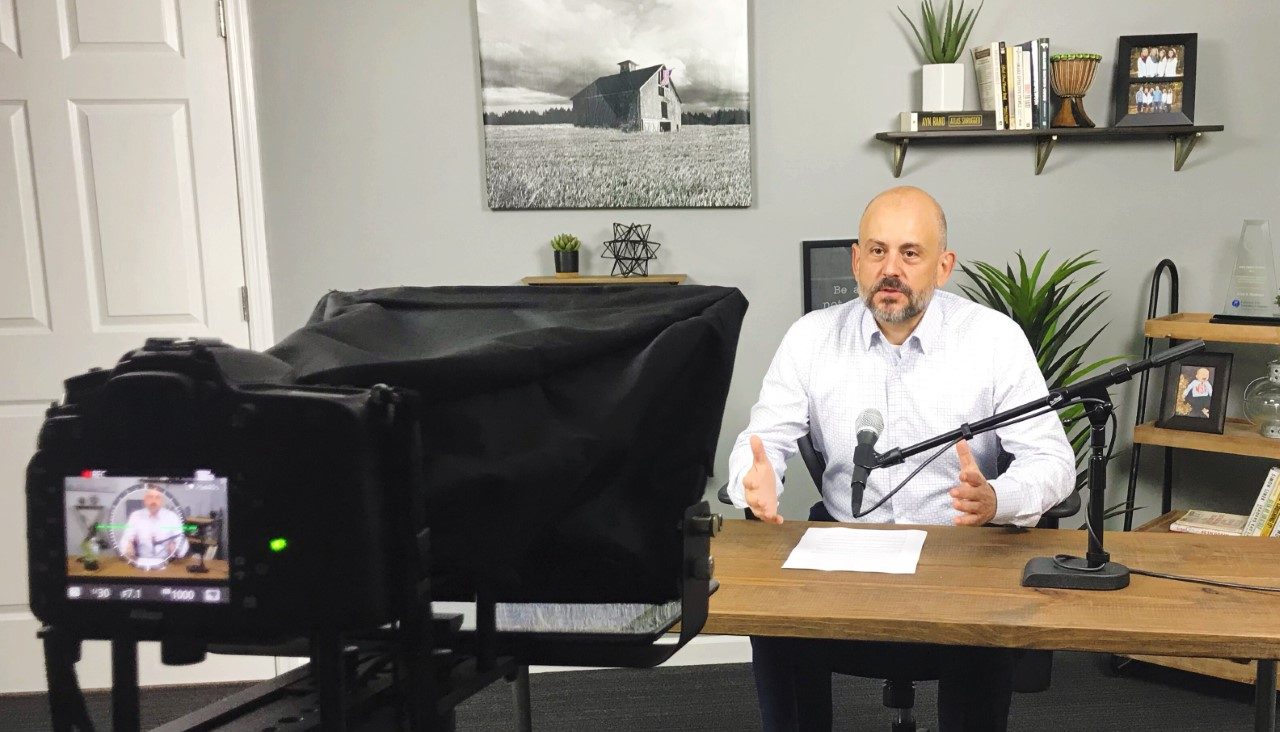I have been an entrepreneur going on twenty-seven years and have made it a priority to help other entrepreneurs avoid many of the mistakes I have made. This includes helping them fill a serious gap in their financial planning and build their own entrepreneurial mindset and strategy.
The gap exists between their thoughts and goals and the advice they are getting from their CPA or financial advisor.
The Gap between the Entrepreneurial mindset and Traditional Advice
For most entrepreneurs, their goal is to grow a business, which requires access to cash.
Meanwhile, their financial advisor is telling them to invest long term, pulling resources away from the business owner.
Many CPA’s suggest opening SEP IRA’s, 401k’s or profit-sharing plans to reduce current year’s tax liabilities. However, this also pulls resources away from the business owner.
CPA’s even go as far as to suggest spending money to generate a tax deduction which translates to the business owner spending a dollar to save twenty or thirty cents in taxes.
It’s fairly radical thinking when you stop to consider what is happening. However, the real struggle is the feeling of guilt and confusion about what should be done.
All of the advice being given doesn’t seem to align with their ambitions to grow a business.
The unfortunate result of this is a sense of uncertainty about whether they should be doing something other than focusing on what they know, which is running, growing and operating their business.
If you’re experiencing any of these symptoms, please understand that it’s not your fault.
Don’t lock up your money
It is not uncommon to hear from business owners who say their advisor has them in retirement accounts. At the same time, I find that they have bank loans and are trying to improve cash flow.
It’s the same thing on the tax side. I hear clients say their CPA is telling them to fund a SEP IRA to reduce this year’s tax liabilities and in the same breath they are talking about business expansion and bank loans.
From an advisor’s perspective, what they are suggesting makes good sense. This doesn’t mean you have to take the advice being given.
If your focus is to grow a business, that means you should concentrate on managing cashflow and having money available when you need it to grow your business without relying on banks.
Locking money up in a long-term investment account that you have no access to isn’t going to fill that need.
Don’t hoard your money either
On the flip side of this, I do come across business owners who have large sums of money stored in bank accounts earning nothing. Meanwhile they are carrying bank loans that are absorbing a big percentage of their monthly cash flow.
This is also not a good idea.
All of this is the result of being mismatched with a CPA or financial advisor who does not fully understand the entrepreneurial mindset or the desires you have as a business owner.
Of course, things can look different for each business owner. Diversifying outside of your business once you have reached a level of contentment is probably a good idea.
But I am not necessarily talking about retirement accounts. Diversification for a business owner can look different than diversification for someone who isn’t a business owner.
A business owner has a unique set of needs and their focus is usually tied to creating streams of income to use and live off of.
So, diversification for you may mean another business or investments that are income generating.
Think of diversification as multiple streams of diversified income rather than a selection of stocks, bonds and mutual funds. Your financial team should work with you to create better cash flow strategies and systems for maximizing your efforts.
And all of it should result in you having more control over your money and resources, which will offer you the financial freedom and flexibility that you are looking for.
How do you know what advice to choose?
If you find yourself in a situation where you feel that you have a tax person or investment person giving you advice that is taking resources away from you, then it may be time to find another team of advisors who understand the entrepreneurial mindset.
Now let’s discuss some practical things you can do right now to get moving in the right direction.
I have learned over the years that successful business owners are good at what they do, and at creating opportunity for themselves.
They are good at growing their top line, but that growth doesn’t always translate to a healthy bottom line.
Sometimes the zeal for growth leaves the details of what is happening in the middle overlooked or ignored. A good entrepreneurial mindset balances both.
CASHFLOW IMPROVEMENTS
So, here are a few tips for improving the bottom line without necessarily having to grow the top line.
At the top of this list is understanding cash flow.
I would contend that there is nothing more important (financially) than cash flow.
It is the goal of every business owner to not only increase and expand income sources on the top line but to also create efficiencies in the middle to improve the bottom line.
This can be accomplished by focusing on reducing how much money is flowing to the government and banks
By making little tweaks in this area you can often improve cash flow and enjoy more freedom for yourself.
TAX REDUCTION
When it comes to how much is flowing to the government, one of the traps I see people fall into is believing that tax planning is preparing a tax return and filing extensions. This simply is not true.
Your relationship with your tax advisor should go beyond completing forms.
Taxes are complicated and can lead to oversights and mistakes if not handled properly.
There are legal and ethical ways to reduce tax liabilities. If you aren’t having conversations with your tax advisor about how to take advantage of these opportunities, then you are robbing yourself of precious cash flow that you could be using to improve your bottom line.
What too few business owners know or understand is that as your business grows and organizational changes occur, your tax filing status may need to be changed along with the possibility of adding addition companies to support your growth.
Understanding your company’s tax structure and cashflow can mean thousands of dollars in overpaid taxes if not structured correctly.
REDUCING BANK DEPENDENCY
When it comes to money flowing to banks, first get organized then reevaluate how you view this relationship.
To get organized, you need to figure out exactly how much money it takes to run your company over a calendar or fiscal year.
It is helpful to do this for your personal life as well.
Many business owners can do this for their business, but may not do this well on the personal side.
So, make this a priority because all of this ties together and is part of your financial picture.
This exercise offers an opportunity to plug leaks in your spending that can increase cash flow and your ability to invest back into your company.
Next, chronologically map out the big-ticket purchases in your future that are separate from your normal cash flow needs.
This would include such things as equipment upgrades and expansions and car replacements and home improvements on the personal side.
The exercise helps tie your cash flow and your future cash needs together to better structure a banking strategy that has you earning interest instead of paying interest.
This process can help free you from bank loans while having more money flowing to you, not away from you.
SUCCESSION
Regardless of how much you love your business, there are probably many things you don’t love about it.
Whether you plan to retire at some point or plan to work until you die, having the right people, resources and systems in place to free you from the day-to-day operations of your business gives you flexibility of time.
For many business owners this can be a conundrum because many business are built around the entrepreneur. Sustainability is an important part of a good entrepreneurial mindset.
Many business owners simply don’t know how to free themselves from the day to day of the business.
They want to retire or pursue other interests but don’t know how to go about making changes that don’t seem radical in terms of how they have always operated their business up to this point.
Whether you want to build a business to sell or build a business for generating a stream of income for yourself, the goal should be to have a business that runs and operates without your day-to-day involvement.
I know with my own business, I not only focus on technology and systems, I also focus time and money on human capital, which is a fancy term for staff.
When hiring new people, think about how this new hire will move you further away from the day-to-day activities.
This will allow you to have more time to grow the business, pursue other interests or retire all together.
Having a succession plan in place helps protect you, your spouse, your employees and clients from a death, disability or planned future sale.
Being an entrepreneur means wearing several hats but how long you wear them is up to you.
Building a great entrepreneurial mindset going forward
My team and I are here to help you feel more confident about your decisions and operating your business.
If you’re not already following me on Facebook, YouTube, Instagram and LinkedIn, or subscribed to our Forbes Top 10 Rated Podcast, The Common Sense Financial Podcast, take time to do that right now.
And if you have specific questions about the entrepreneurial mindset or are looking for an advisor to help you navigate these important decisions, reach out through my websites. (Link to contact page)






